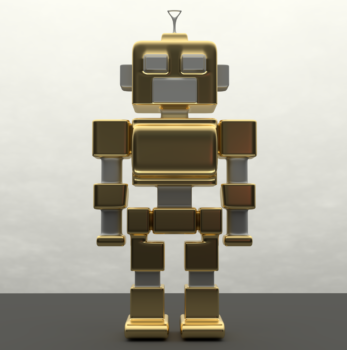AI & Advertising: Measurement of the Future
by Lindsay Rowntree on 14th Aug 2017 in News

AI is slowly creeping into all aspects of our lives – retailers are introducing chatbots, stock market shares are traded algorithmically, and driverless cars are in the final testing stages. We’ve already seen programmatic trading change the ad industry completely in the last few years. The next big leap in technology, writes Emi Gal, CEO of Teads Studio, exclusively for ExchangeWire, will make every brand message interactive and personalised, with brands relying less on talking to huge audiences, but instead talking to us one-on-one.
What does the ad of the future look like?
AI is being used to target specific individuals with unique, personalised ads based on their interests and audience profiles. These exciting advances have been made possible through developments in deep learning, which uses algorithms to mimic the human brain’s neural networks. Deep learning allows computers to process huge amount of data extremely quickly and, using this data, create adverts that are tailored to individual consumers.
AI is creating self-assembling ads. The best way to describe them is to compare them to building blocks. Tomorrow’s advertisers will have all of a brand campaign’s assets: logos, images, text, video, guidance colour, language, plus all of the data from every related brand campaign ready to put together, on the fly.
Using these diverse elements, AI will flawlessly assemble the right creative approach for the right person, at the right time, and in real time based on data and the behavioural profile of the individual consumer. In the end, a brand won’t have just one version of a video ad, or even two or three. Rather, it’ll have a unique version of the ad for every consumer.
For example, a car manufacturer will be able to use the wealth of customer data it has, coupled with AI, to target individual consumers with a personalised ad for a car that fits their exact tastes. It might even be able to use this data to predict what similar models might fit a customer’s likes and dislikes in future.
Preparing for AI: get your data house in order

Emi Gal, CEO, Teads Studio
If current trends continue, it is predicted that by 2025 AI will be on par with humans in terms of computing power. So, how should brands prepare themselves for this new way of working?
AI is able to gather and process massive amounts of data but, just as a human needs food to survive, the computer needs to be fed data to perform. It is therefore essential that brands develop sound data strategies and invest in data management platforms (DMPs) to handle the mountains of big data that AI requires.
This can come from three sources:
Third-party data: accumulated across the web by large corporate 'data sources'
Ad-network data: collected by content publishers to build histories of their site visitors
First-party data: gathered by advertisers themselves: emails, phone numbers, purchase histories, etc.
In order to be as prepared as possible, it is vital that brands have their data stored in the most efficient way. Once stored properly, the DMP can then build a 360º profile of every customer based on their unique attributes and interests. That information can, in turn, be used to create personalised and interactive ads.
The more customer data fed into the AI algorithm, the more the AI knows, and the more the computer can personalise and target an ad in the most immersive way.
Measurement of the future: death of the CTR and the birth of the ad of the future
As using AI to build personalised adverts is a new way of doing things, it makes sense to have a new way of measuring its success. Previously, ad success has been measured through click-through rates (CTRs) as well as impressions and completion rates, but this is no longer fit for purpose.
This is because the adverts of the future won’t need people to end up on the brand’s website to complete a transaction.
Instead, we’ll see interactive chatbots embedded within personalised video adverts. The chatbot will appear in the video asking questions aimed at identifying the user’s individual tastes and requirements. The chatbot will then take the consumer directly to purchase. Working together, this video/chatbot combo will cover the customer journey from seeing a product all the way through to ordering and paying for it.
As AI changes the way we advertise, it will also change the way we measure the success of ads. The key measurements will be engagement rate and the actual time a consumer spends viewing an ad.
With all these innovations rapidly becoming commonplace in the advertising industry, AI is no longer science fiction – fully personalised ads are fast becoming a reality. The day when an AI will be able to serve you an ad for your dream car will be here much sooner than you think.
Artificial IntelligenceMeasurement








Follow ExchangeWire